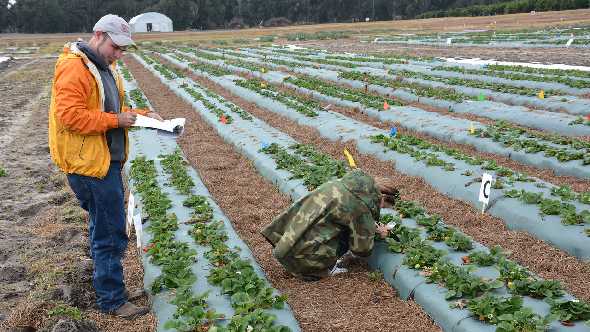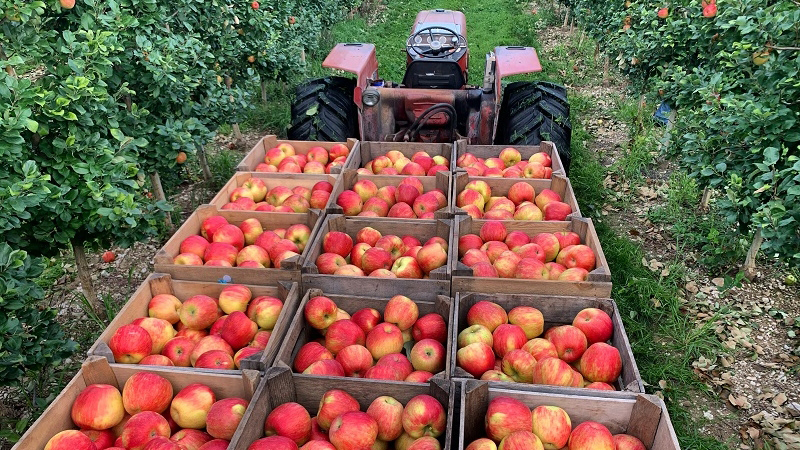Scientists Find Better Way To Save Strawberries From A Freeze
New University of Florida research shows strawberry growers can keep using both their current sprinkler spacing and low pressure or enhanced real-time irrigation control to save water – and they can produce the same crop yield during mild freezes.

Photo courtesy of UF/IFAS
Michael Dukes, a UF/IFAS professor of agricultural and biological engineering and the lead author on the study, said improvement lies with an automated control treatment that used real-time dew point measurements – rather than temperatures — to turn the system on and off.
Growers typically turn on their sprinklers when temperatures reach 1.1° centigrade, or around 34°F, and keep them on until the sun melts the ice. During the years of the study, temperatures dipped below 1.1° centigrade for 50 hours. In each of the two years prior to the study, freezing periods were longer, with about 150 to 200 hours below that temperature.
In the study, scientists used growers’ methods with real-time dew point measurement to control the system, and then researchers used grower spacing with low water pressure.
The enhanced control system saved 91,000 gallons in one year, 700,000 gallons the next, Dukes said. The second year is more representative of what growers can expect, he said.
“By reducing water use, growers also can reduce fertilizer leaching, as well as prevent fungi diseases, meaning less pesticides,” said Maria Zamora, who conducted the experiment for her master’s thesis. “That, in turn, can be translated into a reduction of aquifer pollution.”
The findings the study, funded by the Southwest Florida Water Management District, should help Florida strawberry growers, who are located mainly in Hillsborough County.
While using less ground water helps the environment, the study did not cover hard freezes because the temperatures did not get that cold during the three growing seasons in the experiment.
The next step would be to see if a better irrigation system can save water and produce the same strawberry yield during a hard freeze, Dukes said.
Results of the study appear in the current issue of the Journal of Irrigation and Drainage Engineering.









